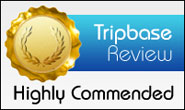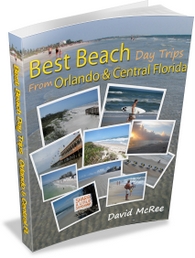
Snowy Plover eggs resting on the beach sand and shell. Many shorebirds don't build a nest--their eggs blend in with the sand and are protected by natural camoflage. Nesting season brings many dangers from human foot traffic and pets. Photo courtesy of CCNRD, Environmental & Extension Services.
Posted by David McRee at BlogTheBeach.com
Charlotte County (located about halfway between Tampa and Naples) has some of the least developed beaches in the state of Florida: Stump Pass State Park, Palm Island, Don Pedro Island State Park, and Little Gasparilla Island. So it’s no surprise that both shorebirds and sea turtles favor these beaches for nesting. Shorebirds nest from February through August. Sea Turtles nest from May through October. Fact: 84% of Charlotte County’s 219 miles of shoreline is protected preserve.
For visitors, getting involved–beyond just observing– is easy. The Charlotte County Natural Resources Division offers a Shorebird Steward program where participants learn all about nest site disturbance by dogs and humans, and loss of suitable migratory stopovers and resting areas and how these things affect our shorebird population. Shorebird Stewards may get involved in helping to educate the public by talking to and handing out literature to beachgoers.

A least tern chick blends in with the beach sand in on a Charlotte County beach. Photo courtesy of the Charlotte County Natural Resources Division, Environmental & Extension Services.
The snowy plover is a particularly endangered species with only about 45 known nesting pairs on the southwest gulf coast of Florida (six are in Charlotte County). If you’d like to find out how you can get involved, contact CCNRD at 941-764-4392. For more information on what CCNRD is doing, visit http://www.charlottecountyfl.com/EnvironmentalServices/NaturalResources
While on Palm Island recently, I met two Shorebird Stewards, Sarah and Merrill, and they were really excited about what they were doing. Give it a try!

A least tern feeds its chick. Photo courtesy of Charlotte County Natural Resources Division, Environmental & Extension Services.
Educational and outreach programs on sea turtles are also offered by the Charlotte County Natural Resources Division.
The Charlotte Harbor Visitor & Convention Bureau is one of the most active and effective I’ve come into contact with. They have teamed up with the CCNRD to help get the word out to visitors about how to share the beaches with endangered wildlife. They offer these tips:
- From February through October visitors are likely to encounter either shorebird nesting areas or sea turtle nests on the beach. Be on the lookout for signs or roped-off areas, and understand that not all nesting areas have been discovered and marked. Avoid disturbing them.
- Dogs and cars are not permitted on Charlotte County public beaches. Visitors staying in private homes on “private” beaches should always keep pets on a leash and at a safe distance from nesting areas. Birds may be feeding, resting, or incubating eggs.
- Stay clear of birds displaying aggressive behavior like diving at people, screeching, or pretending to be injured. This type of behavior may indicate that they are protecting their nests. Disturbed birds may abandon their nests.


